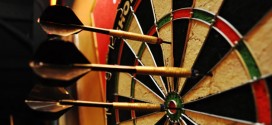Approximately 791,000 more homeowners returned to a state of positive equity during the third quarter of 2013 leaving only 6.4 million homes still underwater, according to the latest analysis by CoreLogic.
The total has fallen from 7.2 million homes, or 14.7 percent of all residential properties with a mortgage, at the end of the second quarter of 2013*. The total number of mortgaged residential properties with equity currently stands at 42.6 million.
Negative equity, often referred to as “underwater” or “upside down,” means that borrowers owe more on their mortgages than their homes are worth. Negative equity can occur because of a decline in value, an increase in mortgage debt or a combination of both.
The national aggregate value of negative equity was $397 billion at the end of the third quarter compared to $430 billion at the end of the second quarter of 2013, a decrease of $33.7 billion. This decrease was driven in large part by an improvement in home prices.
Of the 42.6 million residential properties with positive equity, 10 million have less than 20 percent equity. Borrowers with less than 20 percent equity, referred to as “under-equitied,” may have a more difficult time obtaining new financing for their homes due to underwriting constraints. Under-equitied mortgages accounted for 20.4 percent of all residential properties with a mortgage nationwide in the third quarter of 2013, with more than 1.5 million residential properties at less than 5 percent equity, referred to as near-negative equity. Properties that are near negative equity are considered at risk should home prices fall.
“Rising home prices continued to help homeowners regain their lost equity in the third quarter of 2013,” said Mark Fleming, chief economist for CoreLogic. “Fewer than 7 million homeowners are underwater, with a total mortgage debt of $1.6 trillion. Negative equity will decline even further in the coming quarters as the housing market continues to improve.”
“We should see a further rebound in consumer confidence and economic growth in 2014 as more homeowners escape the negative equity trap,” said Anand Nallathambi, president and CEO of CoreLogic. “Home price appreciation has helped more than 3 million property owners regain equity since the first quarter of 2013.”
Highlights as of Q3 2013:
- Nevada had the highest percentage of mortgaged properties in negative equity at 32.2 percent, followed by Florida (28.8 percent), Arizona (22.5 percent), Ohio (18.0 percent) and Georgia (17.8 percent). These top five states combined accounted for 36.4 percent of negative equity in the U.S.
- Of the largest 25 metropolitan areas, Orlando-Kissimmee-Sanford, Fla., had the highest percentage of mortgaged properties in negative equity at 32.3 percent, followed by Tampa-St. Petersburg-Clearwater, Fla. (30.1 percent), Phoenix-Mesa-Scottsdale, Ariz. (23.2 percent), Riverside-San Bernardino-Ontario, Calif. (20.8 percent) and Chicago-Naperville-Arlington Heights, Ill. (20.5 percent).
- Of the total $397 billion in negative equity, first liens without home equity loans accounted for $202 billion aggregate negative equity, while first liens with home equity loans accounted for $195 billion.
- 3.8 million upside-down borrowers hold first liens without home equity loans. The average mortgage balance for this group of borrowers is $221,000. The average underwater amount is $53,000.
- 2.5 million upside-down borrowers hold both first and second liens. The average mortgage balance for this group of borrowers is $296,000.The average underwater amount is $77,000.
- The bulk of home equity for mortgaged properties is concentrated at the high end of the housing market. For example, 92 percent of homes valued at greater than $200,000 have equity compared with 82 percent of homes valued at less than $200,000.
*Second quarter 2013 data was revised. Revisions with public records data are standard, and to ensure accuracy, CoreLogic incorporates the newly released public data to provide updated results.
 RealEstateEconomyWatch.com Insight and Intelligence on Residential Real Estate
RealEstateEconomyWatch.com Insight and Intelligence on Residential Real Estate



One comment
Pingback: Only 13 Percent are Still Underwater | Belair Realty